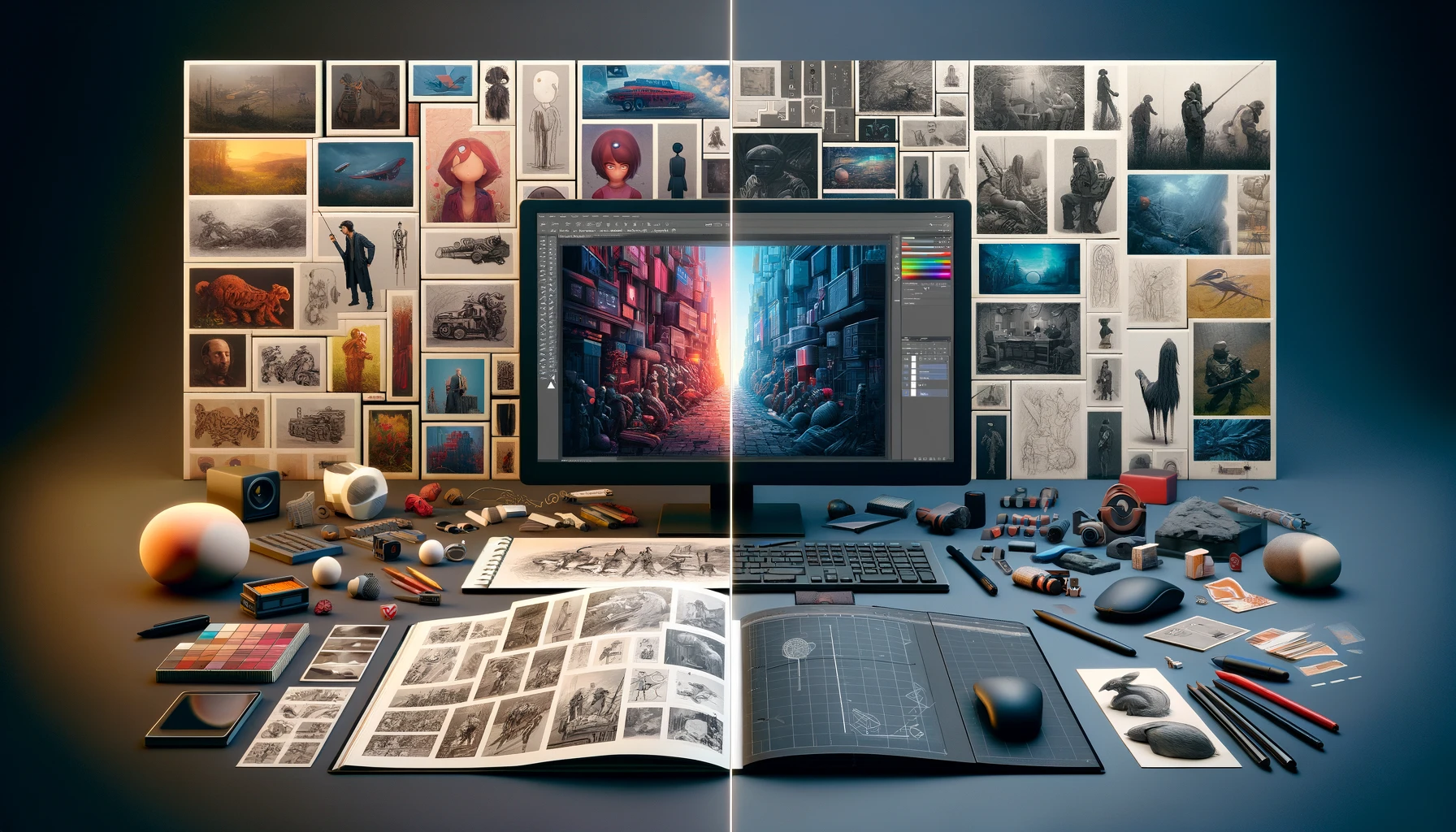
Reference Art
Created on 26 March, 2024 • Insights & Articles • 2,051 views • 2 minutes read
Explore the crucial role of reference art in achieving realism and creativity in 3D design. Learn how it enhances design efficiency, fosters learning, and improves collaborative projects in this comprehensive guide.
The Essential Role of Reference Art in 3D Design: A Guide for Designers and Artists
In the world of 3D design and artistry, reference art is not just a tool; it's a fundamental component of the creative process. This guide explores the multifaceted reasons why 3D designers and artists consistently rely on reference materials to bring their visions to life.
Understanding Reference Art
Reference art encompasses a wide range of visual materials, including photographs, paintings, drawings, and even real-world objects, that artists and designers use to guide their creative process. These references serve as a visual framework, helping creators achieve accuracy, realism, and depth in their work.
The Bridge to Realism
One of the primary reasons for using reference art is to achieve a level of realism that resonates with the audience. By studying real-world references, designers can understand the nuances of light, shadow, texture, and form, translating these elements into their 3D creations to enhance authenticity and believability.
Enhancing Creativity
Contrary to the belief that reference art restricts creativity, it actually stimulates the creative process. By exploring a variety of reference materials, artists can combine elements from different sources, fostering innovation and originality in their work. Reference art serves as a springboard for creativity, enabling designers to explore new possibilities and push the boundaries of their imagination.
Improving Efficiency and Accuracy
Reference art significantly boosts efficiency and accuracy in the design process. It provides a clear roadmap, reducing the time and effort spent on trial and error. For industries where precision is paramount, such as architectural visualization and character modeling, reference materials ensure that the final outputs are both accurate and realistic.
Learning and Growth
For budding designers and seasoned professionals alike, reference art is a valuable learning tool. It enables artists to study and replicate the work of their peers and predecessors, honing their skills and understanding of artistic principles and techniques. This continual learning process is crucial for personal development and maintaining relevance in the ever-evolving field of 3D design.
Fostering Collaboration
In collaborative projects, reference art plays a crucial role in establishing a common visual language among team members. It ensures that everyone involved has a clear understanding of the project's aesthetic goals and technical requirements, facilitating effective communication and teamwork.
Conclusion
Reference art is indispensable in the realm of 3D design and artistry. It bridges the gap between concept and reality, enhances creativity, improves efficiency, fosters learning, and facilitates collaboration. By embracing reference materials, designers and artists can elevate their work, achieving new heights of realism and innovation. Whether you're a novice exploring the basics of 3D design or a professional refining your craft, the thoughtful integration of reference art into your workflow is a step toward mastering the art of visual storytelling.
~Realystic
Popular posts
-
RLX Auto Fitter AddonBlender Addons • 4,683 views
-
Blender 3d 4.2 LTS - Beginners GuideInsights & Articles • 3,691 views
-
Art of BlockingInsights & Articles • 2,235 views
-
Troubleshooting Blender Addon ConflictsInsights & Articles • 2,224 views
-